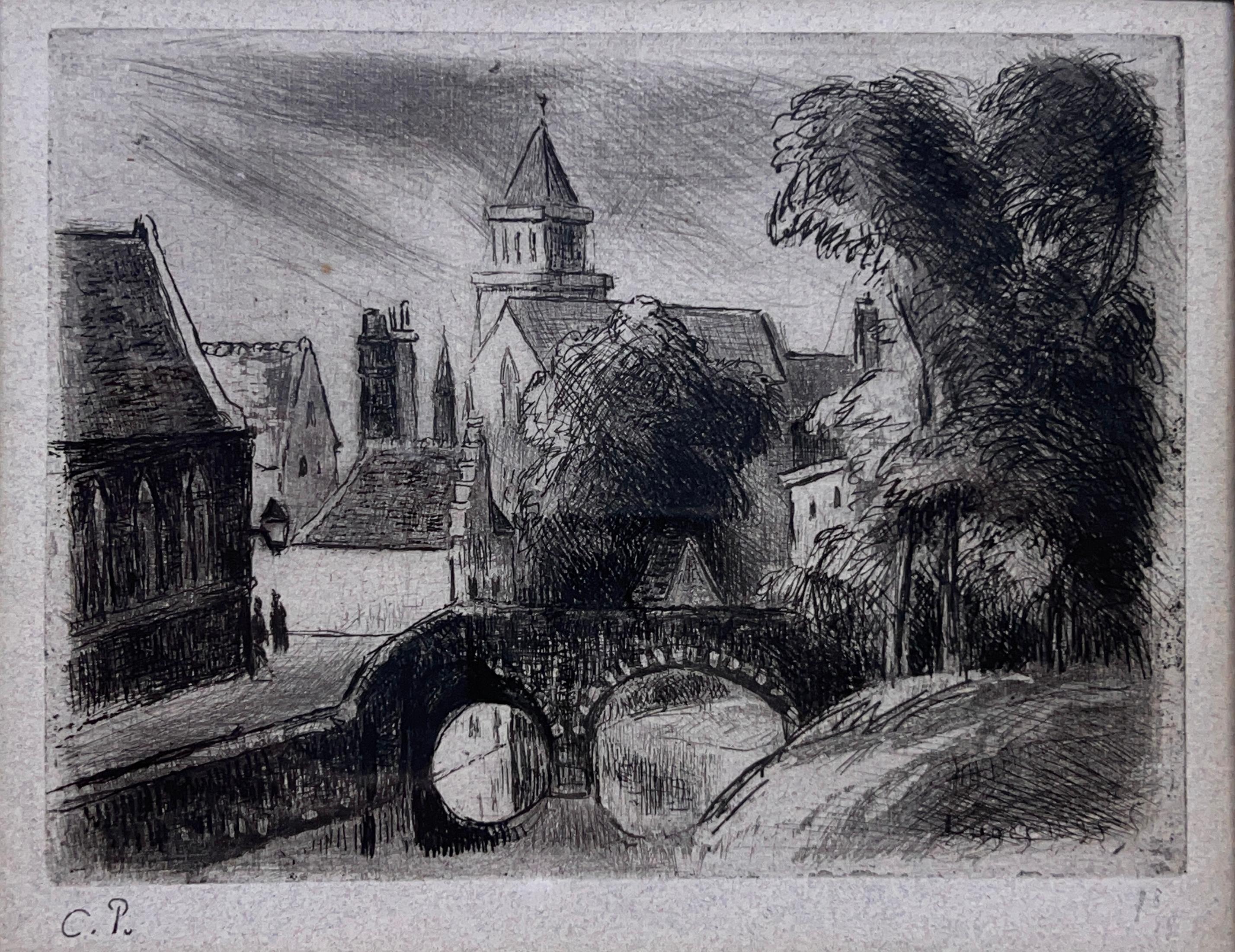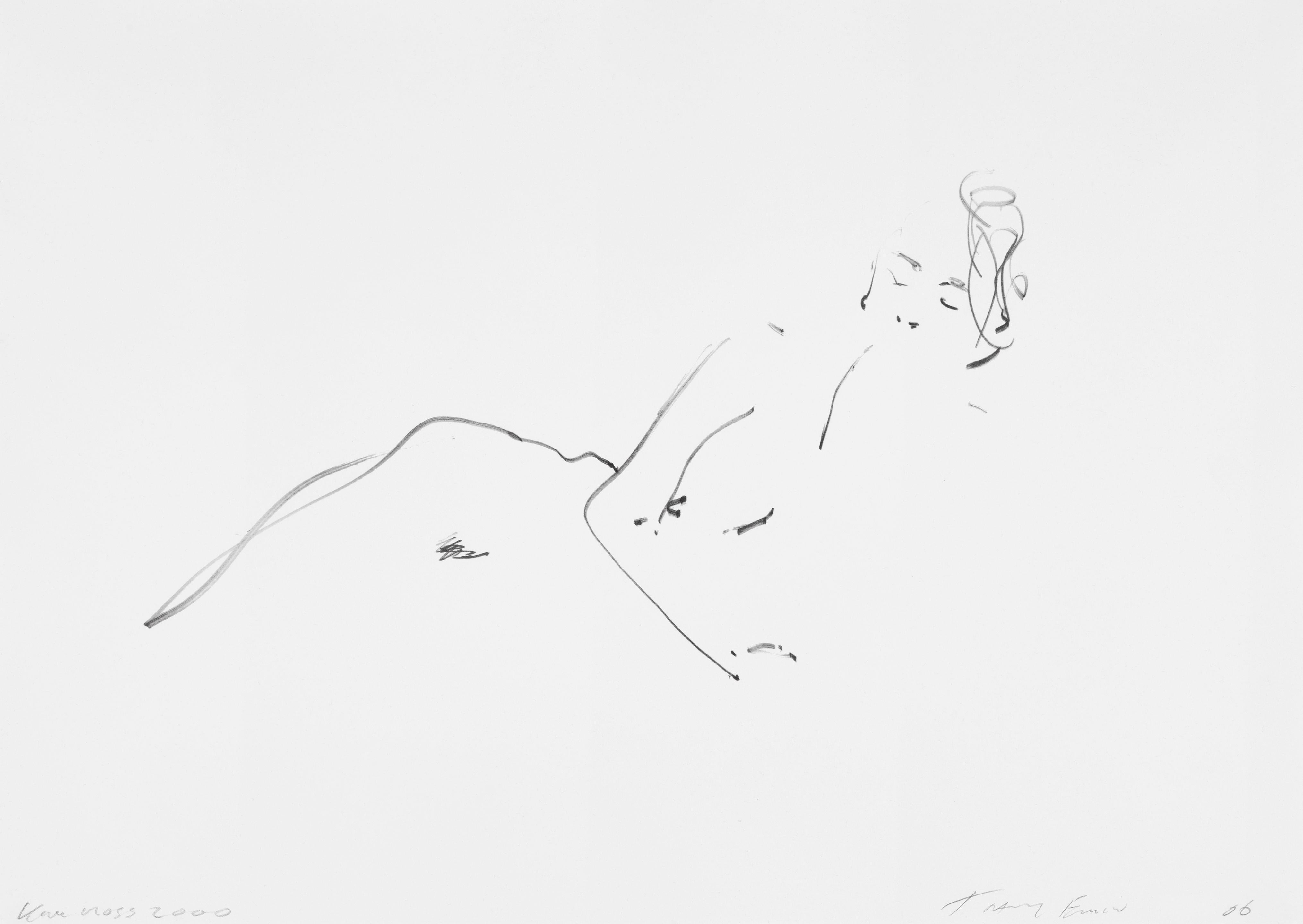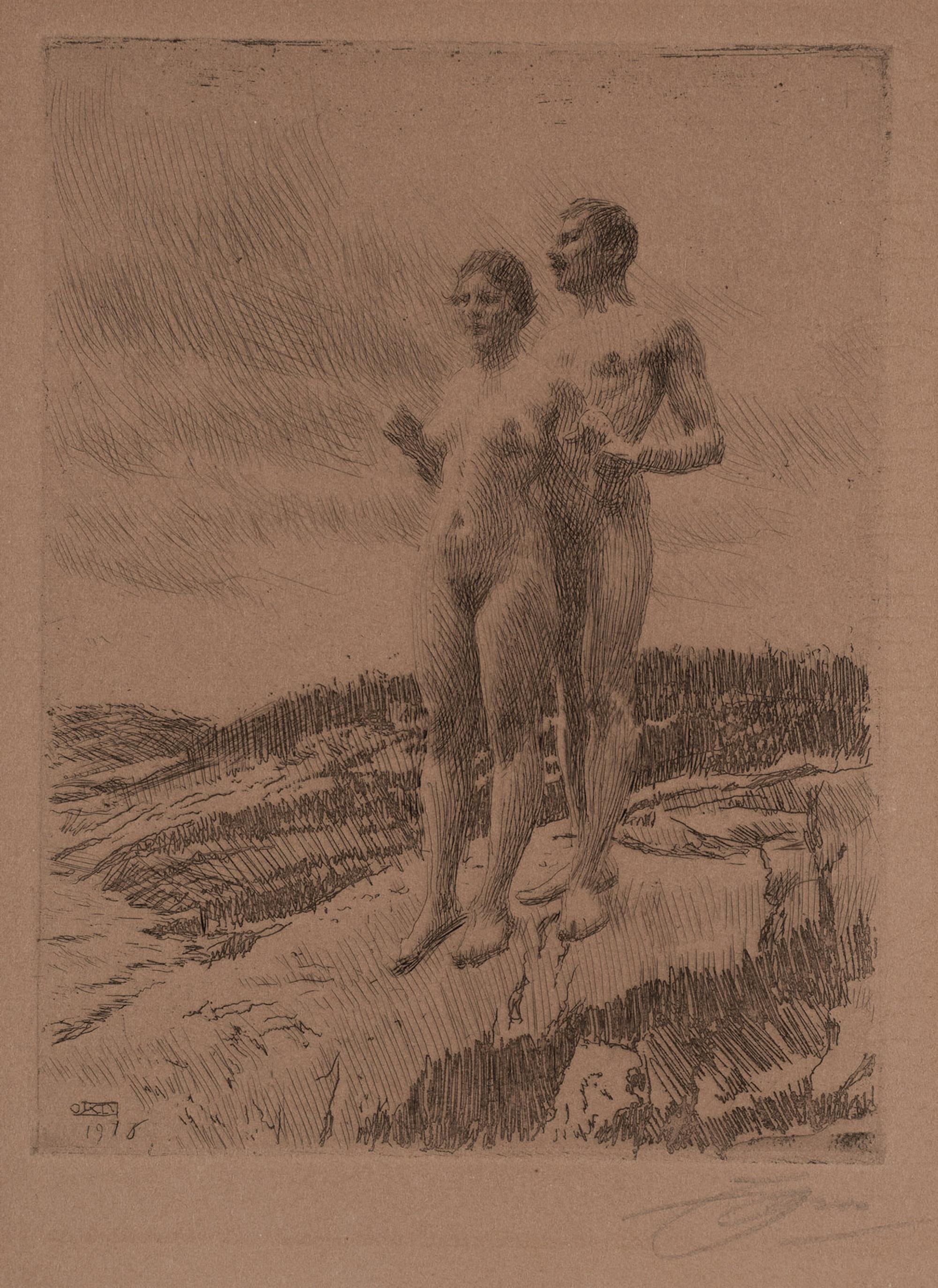Items Similar to Erotic Etching from Le Satyricon
Want more images or videos?
Request additional images or videos from the seller
1 of 8
André DerainErotic Etching from Le Satyricon
About the Item
This lot is for one etching.
---
Derain was born in 1880 in Chatou, Yvelines, Île-de-France, just outside Paris. In 1895 Derain began to study on his own, contrary to claims that meeting Vlaminck or Matisse began his efforts to paint, and occasionally went to the countryside with an old friend of Cézanne's, Father Jacomin along with his two sons. In 1898, while studying to be an engineer at the Académie Camillo, he attended painting classes under Eugène Carrière, and there met Matisse. In 1900, he met and shared a studio with Maurice de Vlaminck and together they began to paint scenes in the neighbourhood, but this was interrupted by military service at Commercy from September 1901 to 1904. Following his release from service, Matisse persuaded Derain's parents to allow him to abandon his engineering career and devote himself solely to painting; subsequently Derain attended the Académie Julian.
At about this time Derain's work began overtly reflecting his study of the Old Masters. The role of color was reduced and forms became austere; the years 1911–1914 are sometimes referred to as his gothic period. In 1914 he was mobilized for military service in World War I and until his release in 1919 he would have little time for painting, although in 1916 he provided a set of illustrations for André Breton's first book, Mont de Piete.
After the war, Derain won new acclaim as a leader of the renewed classicism then ascendant. With the wildness of his Fauve years far behind, he was admired as an upholder of tradition. In 1919 he designed the ballet La Boutique fantasque for Diaghilev, leader of the Ballets Russes. A major success, it would lead to his creating many ballet designs.
The 1920s marked the height of his success, as he was awarded the Carnegie Prize in 1928 for his "Still-life with Dead Game" and began to exhibit extensively abroad—in London, Berlin, Frankfurt, Düsseldorf, New York City and Cincinnati, Ohio.
During the German occupation of France in World War II, Derain lived primarily in Paris and was much courted by the Germans because he represented the prestige of French culture. Derain accepted an invitation to make an official visit to Germany in 1941, and traveled with other French artists to Berlin to attend a Nazi exhibition of an officially endorsed artist, Arno Breker. Derain's presence in Germany was used effectively by Nazi propaganda, and after the Liberation he was branded a collaborator and ostracized by many former supporters.
A year before his death, he contracted an eye infection from which he never fully recovered. He died in Garches, Hauts-de-Seine, Île-de-France, France in 1954 when he was struck by a moving vehicle.
Derain's London paintings were the subject of a major exhibition at the Courtauld Institute from 27 October 2005 to 22 January 2006.
- Creator:André Derain (1880-1954, French)
- Dimensions:Height: 17.5 in (44.45 cm)Width: 13.25 in (33.66 cm)
- Medium:
- Period:
- Condition:
- Gallery Location:Surfside, FL
- Reference Number:1stDibs: LU38210842082
About the Seller
4.9
Platinum Seller
These expertly vetted sellers are 1stDibs' most experienced sellers and are rated highest by our customers.
Established in 1995
1stDibs seller since 2014
1,543 sales on 1stDibs
Typical response time: 1 hour
- ShippingRetrieving quote...Ships From: Surfside, FL
- Return PolicyA return for this item may be initiated within 3 days of delivery.
More From This SellerView All
- Italian Surrealist Aquatint Etching Enrico Baj Pop Art with Watercolor PaintingBy Enrico BajLocated in Surfside, FLEnrico Baj (1924-2003) Italian, limited edition print. Hand signed and numbered in pencil from limited edition of 100 Aquatint etching with the addition of hand watercolor painting ...Category
20th Century Surrealist Figurative Prints
MaterialsWatercolor, Etching, Aquatint
- Italian Surrealist Aquatint Etching Enrico Baj Pop Art Nude Mod Cherubs AngelsBy Enrico BajLocated in Surfside, FLEnrico Baj (1924-2003) Italian, limited edition print. Hand signed and numbered in pencil from limited edition of 100 Aquatint etching Image size: cm 39.5 x 29.5, sheet cm 53 x 39 ...Category
20th Century Surrealist Figurative Prints
MaterialsEtching, Aquatint
- Italian Surrealist Aquatint Etching Enrico Baj Pop Art Nude Mod Cherubs AngelsBy Enrico BajLocated in Surfside, FLEnrico Baj (1924-2003) Italian, limited edition print. Hand signed and numbered in pencil from limited edition of 100 Aquatint etching Image size: cm 39.5 x 29.5, sheet cm 53 x 39 ...Category
20th Century Surrealist Figurative Prints
MaterialsEtching, Aquatint
- Italian Surrealist Aquatint Etching Enrico Baj Pop Art with Watercolor PaintingBy Enrico BajLocated in Surfside, FLEnrico Baj (1924-2003) Italian, limited edition print. Hand signed and numbered in pencil from limited edition of 100 Aquatint etching with the addition of hand watercolor painting on it. Image size: cm 39.5 x 29.5, sheet cm 53 x 39 Italian artist Enrico Baj (1924-2003) was born in Milan into a wealthy family, but left Italy in 1944 having upset the authorities and to avoid conscription. He studied at the Milan University law faculty and the Brera Academy of Art. Italian Surrealist Pop Art. Artist, attorney, ironist, writer, sharp critic, and political dissenter, Enrico Baj brought an urgent, refreshing and unique voice to the art of his time. In 1951 he founded the Movimento d'Arte Nuclear...Category
20th Century Surrealist Figurative Prints
MaterialsWatercolor, Etching, Aquatint
- Italian Surrealist Aquatint Etching Enrico Baj Pop Art Nude Mod Cherubs AngelsBy Enrico BajLocated in Surfside, FLEnrico Baj (1924-2003) Italian, limited edition print. Hand signed and numbered in pencil from limited edition of 100 Aquatint etching Image size: cm 39.5 x 29.5, sheet cm 53 x 39 ...Category
20th Century Surrealist Figurative Prints
MaterialsEtching, Aquatint
- Italian Surrealist Aquatint Etching Enrico Baj Pop Art Nude Mod Cherubs AngelsBy Enrico BajLocated in Surfside, FLEnrico Baj (1924-2003) Italian, limited edition print. Hand signed and numbered in pencil from limited edition of 100 Aquatint etching Image size: cm 39.5 x 29.5, sheet cm 53 x 39 ...Category
20th Century Surrealist Figurative Prints
MaterialsEtching, Aquatint
You May Also Like
- Quai des menetriers a brugesBy Camille PissarroLocated in Los Angeles, CA"Quai des Ménétriers à Bruges" is a remarkable etching created by the renowned French Impressionist artist, Camille Pissarro. This exquisite artwork captures the beauty and charm of ...Category
Late 19th Century Nude Prints
MaterialsAquatint, Etching
- Kate MossBy Tracey EminLocated in London, GBPolymer gravure etching. This piece is part of a limited edition of 250 prints. Produced in 2000. Signed and numbered in pencil by Tracey Emin.Category
2010s Contemporary Nude Prints
MaterialsEtching, Lithograph
- The TwoBy Anders ZornLocated in Tallinn, EEAnders Zorn (Utmeland/Dalarne, 1860 - Mora/Sweden, 1920) The Two", 1916 Signed in pencil lower right and monogrammed and dated in the plate. Etching on laid paper. 35,5 x 23 cm; 20,2...Category
1910s Figurative Prints
MaterialsLaid Paper, Etching
- Personnages et NuBy Pablo PicassoLocated in ZEIST, UTPablo Picasso- Personnages et Nu Medium: Etching on laid wove paper. Printer & Publisher: Printed by Jacques Frélaut, 1960 Published by Galerie Louise Leiris, 1960 Dimensions: ...Category
1960s French School Nude Prints
MaterialsEtching
- Portfolio Metamorfosis IBy Louise BourgeoisLocated in Ljubljana, SIPortfolio Metamorfosis I. Original 7 etching, one with collage, 1999. Edition of 25 signed and numbered impressions on Arches paper. The entire portfolio is for sale. Louise Bourgeoi...Category
1990s Post-Modern Figurative Prints
MaterialsMixed Media, Etching
- The Talisman (so called Dukatenscheisser) - The philosopher's stone -By Carl PlückebaumLocated in Berlin, DECarl Maria Plückebaum (1880 Düsseldorf - 1952 ibid.), Der Talismann (sog. Dukatenscheisser), partly colored etching, 11.5 x 8.5 cm (plate size), 26.5 x 20 cm (sheet size), signed by hand below the image on the right "C. Plückebaum" and inscribed by hand at lower left "Der Talismann". - left and right side of the sheet with browned stripes, otherwise good copy - The philosopher's stone - About the artist Here, Carl Plückebaum gives free rein to his anti-academic impulses and turns the subtle humor of his pictures into crudeness. Following Adrian Ostade's peasants as they go about their needy business, we see a cowardly fellow in a squatting position. His excrement, however, is not the organic remains of digestion, but - like the golden donkey in the Grimm fairy tale - ducats. However, they appear more brown than golden, which is emphasized by the discreet hand-coloring of the picture. The unattractive accumulation is countered by the blossoms decorating the crouching man's hat. Totally absorbed in his action, his activity is evident in the strained expression on his face, giving Plückebaum a whole new verisimilitude to the concept of naturalism. The title "The Talisman" then turns naturalism back to the miraculous, formulating in a humorous way that these legacies are also a "miracle of nature". About the artist Coming from a poor background, Carl Plückebaum, who had a walking disability and was of short stature, initially worked as a church restorer. He also took private drawing lessons. In 1901 he won the first prize of the Düsseldorf Museum of Decorative Arts, which enabled him to finance his studies at the Düsseldorf Academy. There he was a pupil of Eduard von Gebhardt and Peter Janssen the Elder, but began to doubt the academic teaching. In 1906 he took part in a group exhibition at the Städtische Kunsthalle Düsseldorf, which violated the academy's statutes and led to his dismissal. However, the extraordinary success with the public confirmed him as an artist and provided him with the financial means for a study trip to Italy. Enchanted by Florence, he retired to the Franciscan monastery of Fisole, where he worked as a fresco painter. Back in Düsseldorf, he turned increasingly to children's and animal drawings, and in 1907 he was a founding member of the Niederrhein Secessionist Artists' Group. In 1910 he travelled to Italy again, accompanied by his painter friends Walter Ophey and Carl Schmitz-Pleis, visiting Rome and Naples in particular. He then stayed in Munich to study the Old Masters at the Pinakothek. It was in the artistic circles of Schwabing that he met his future wife, the painter Meta Weber. In Düsseldorf, Carl and Meta Plückebaum...Category
Early 20th Century Realist Figurative Prints
MaterialsEtching





